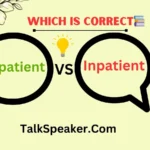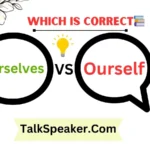Last updated on October 24th, 2024 at 03:57 pm
Want to speak more clearly about time? Understanding when to use “how long” vs. “how much time” can make all the difference! “How long” covers general durations, while “how much time” is perfect for precise moments. Master these phrases to sound natural and confident in any conversation.
Get the full breakdown at TalkSpeaker and elevate your English skills today!
Understanding how to express duration and measure time accurately is a crucial part of mastering the English language, particularly in American English.
Whether you’re having a casual conversation, writing an academic paper, or conducting business, knowing the nuances of phrases like “how long” and “how much time” can make your communication more precise and effective.
In this comprehensive guide, we will explore these phrases in depth, providing clear examples, grammatical structures, and contextual usage to help you understand and use them correctly.
Key Differences Between “How Long” and “How Much Time”
Definitions and Usage
- How Long: This phrase typically asks about the duration of an event or action. For example, “How long did you wait?” It is often used in both casual and formal contexts and can relate to various measures of time (minutes, hours, days, etc.).
- How Much Time: This phrase seeks a more precise measurement of time, often implying a need for exact figures or a specific duration. For instance, “How much time do we have left?” It is commonly used in situations requiring precision, such as scheduling or planning.
Comparative Analysis
Understanding the subtle differences between these phrases is essential for clear communication.
“How long” is generally more flexible and can be used in a wide range of contexts, while “how much time” often suggests a more formal or detailed inquiry.
Examples:
- Casual: “How long did you wait for the bus?” vs. “How much time did you spend on your homework?”
- Formal: “How long have you been working here?” vs. “How much time do we have to complete this project?”
Building a Solid Foundation in Duration Understanding
Grasping the concepts of duration and measurement in language is vital for effective communication.
This knowledge allows you to describe events accurately, set expectations, and plan effectively.
Importance in Various Contexts
- Daily Conversations: Knowing how to express duration helps in everyday interactions. For example, “How long will dinner take?” or “How much time do we have before the movie starts?”
- Professional Settings: In the workplace, being able to communicate time precisely is crucial. Examples include project deadlines, meeting durations, and task scheduling.
- Academic Environments: Understanding and measuring duration accurately can help in academic settings, such as time management for exams, assignments, and class schedules.
The Subtle Nuances of “How Long” in American English
Detailed Exploration
The phrase “how long” can be used in various contexts, each with its own nuances and implications.
It is versatile and adaptable, making it a staple in both spoken and written English.
Common Contexts
- Time Duration: “How long did the meeting last?” This usage focuses on the total time span of an event.
- Length Measurement: “How long is the table?” In this context, it asks for the physical length of an object.
Examples:
- “How long have you been studying English?”
- “How long does it take to get to the airport from here?”
Grammatical Structures
Understanding the grammatical structures that accompany “how long” can help in forming accurate and natural sentences.
Structures:
- Present Perfect: “How long have you lived here?” This structure is used to inquire about the duration of an action or state that started in the past and continues to the present.
- Past Simple: “How long did you wait?” This structure asks about the duration of a completed action.
Common Mistakes and How to Avoid Them
- Incorrect: “How long time did you wait?”
- Correct: “How long did you wait?”
“How Long” in Various Contexts
Casual Conversations
In everyday speech, “how long” is often used to inquire about the duration of common activities. It helps to keep conversations flowing and provides essential information.
Examples:
- “How long have you been here?”
- “How long will this take?”
Professional and Formal Settings
In more formal contexts, the use of “how long” remains relevant but might be framed more precisely depending on the situation.
Examples:
- “How long has this project been underway?”
- “How long is the expected delivery time?”
Cultural Variations
Different regions within the United States might use “how long” slightly differently, though the overall meaning remains the same. Understanding these subtle variations can improve communication with people from diverse backgrounds.
When to Use “How Much Time” for Precision
Detailed Exploration
The phrase “how much time” is typically used when there is a need for a precise measurement of duration. It implies a more exact and formal inquiry compared to “how long.”
Situations Demanding Precision
- Schedules and Deadlines: “How much time do we have to finish this task?” This usage is crucial in contexts where exact timing is essential.
- Appointments: “How much time is allocated for this meeting?”
Examples:
- “How much time will the test take?”
- “How much time do you need to complete this report?”
Common Contexts and Usage
Understanding where “how much time” fits best can enhance clarity and precision in communication.
Examples:
- Academic: “How much time do we have left in the exam?”
- Professional: “How much time is left in the meeting?”
The Formal Tone of “How Much Time”
Explanation of Formality
The phrase “how much time” often carries a more formal tone, making it suitable for business, academic, and other professional settings.
Examples of Formal Contexts
- Business Meetings: “How much time is scheduled for this presentation?”
- Academic Writing: “How much time should be allocated for each section of the paper?”
Comparisons with Informal Alternatives
While “how much time” is formal, alternatives like “how long” can be used in less formal settings without losing meaning.
Examples:
- Formal: “How much time will this project take to complete?”
- Informal: “How long will this project take?”
Comparing “How Long” vs. “How Much Time” Through Examples
Side-by-Side Comparison
Understanding the differences between “how long” and “how much time” can be further clarified through direct comparison.
Examples:
- “How long have you been waiting?” vs. “How much time have you spent waiting?”
- “How long is the movie?” vs. “How much time does the movie run?”
Subtle Differences in Meaning and Tone
- How Long: More flexible, can be used in a variety of contexts.
- How Much Time: More precise, often used in formal or detailed inquiries.
Practical Exercises
Exercise 1: Rewrite the following sentences using either “how long” or “how much time” to make them appropriate for the context.
- “_________ did you stay at the party?” (How long)
- “_________ does it take to bake a cake?” (How long)
- “_________ will the meeting last?” (How much time)
- “_________ have you been practicing piano?” (How long)
Exercise 2:
Create your own sentences using both “how long” and “how much time” in different contexts.
What People Ask?
What’s the difference between “How Long” and “How Much Time”?
“How long” asks about the duration of something, like “How long did the movie last?” while “how much time” asks for an exact amount of time, like “How much time do we have left?”
When should I use “How Long” instead of “How Much Time”?
Use “how long” when asking about general duration, such as “How long did you stay?” Use “how much time” when you need a specific time amount, like “How much time do we need to finish?”
Can I use “How Much Time” in casual conversation?
Yes, you can, but “how much time” is more common in formal situations. For casual talks, “how long” sounds more natural.
Is “How Long” only used for asking about time?
No, “how long” can also ask about physical length, such as “How long is the road?“
Why is it important to know the difference between “How Long” and “How Much Time”?
Using the correct phrase helps you communicate more clearly.
It makes sure others understand if you’re asking for a general idea or a specific amount of time.
Conclusion
Understanding the nuances of “how long” and “how much time” is essential for effective communication in American English.
By mastering these phrases, you can express duration and time measurement accurately and appropriately in various contexts.
Whether in casual conversations, professional settings, or academic environments, knowing when and how to use these phrases will enhance your language skills and improve your ability to convey precise information.
Additional Resources
- Books: “English Grammar in Use” by Raymond Murphy.
- Online Courses: Coursera’s “Grammar and Punctuation” course.
- Practice Websites: Grammarly, Khan Academy.
References
- “The Grammar Book” by Marianne Celce-Murcia and Diane Larsen-Freeman.
- “Practical English Usage” by Michael Swan.
By following this guide, you will be well-equipped to understand and use “how long” and “how much time” effectively, enhancing your communication skills in American English.

As an experienced English teacher, I’m Jessica Thompson, here to make grammar and vocabulary simple and fun. Join me on TalkSpeaker as we explore the language together, one lesson at a time!



